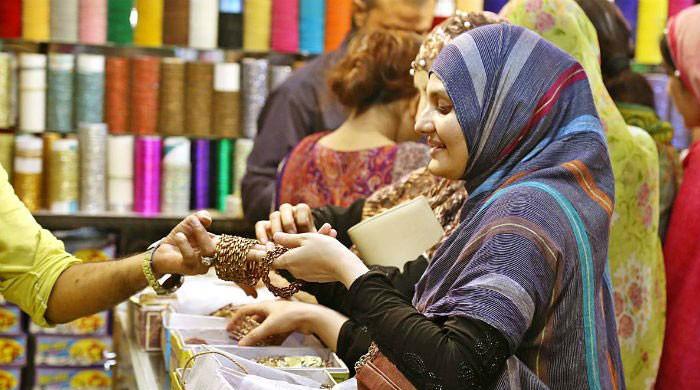As Eid festivities approach, Rawalpindi’s bustling shopping scene is experiencing a noticeable slowdown attributed to decreased purchasing power among consumers. While traditional stalls and small shops witness a surge in activity, major shopping hubs such as Zarkoon Plaza and Ghakar Plaza are grappling with dwindling sales.
The shift in shopping patterns is evident as budget-conscious consumers opt for street vendors over larger malls, seeking affordability in their Eid purchases. The rise of online shopping platforms further diverts foot traffic away from brick-and-mortar establishments, contributing to the subdued atmosphere in main shopping centers.
Late-night visits to markets have seen a surge as shoppers aim to avoid daytime congestion, but overall market activity remains lackluster compared to previous years. Zafar Qadri, General Secretary of the Rawalpindi Cantonment Traders Association, identifies several factors contributing to the downturn, including traffic congestion, inflationary pressures, and ongoing road works that deter potential shoppers.
Despite the festive buzz permeating the city, the struggle to match previous years’ levels of Eid shopping highlights the economic challenges faced by consumers. The slowdown serves as a stark reminder of the impact of inflation and financial constraints on consumer spending habits, mirroring broader economic uncertainties prevalent in the region.
As Rawalpindi navigates through these challenges, stakeholders in the retail sector are urged to adapt to changing consumer preferences and explore innovative strategies to revitalize market activity. While the current slowdown may present short-term hurdles, concerted efforts towards economic recovery and stability offer hope for a brighter future for both businesses and consumers alike.
